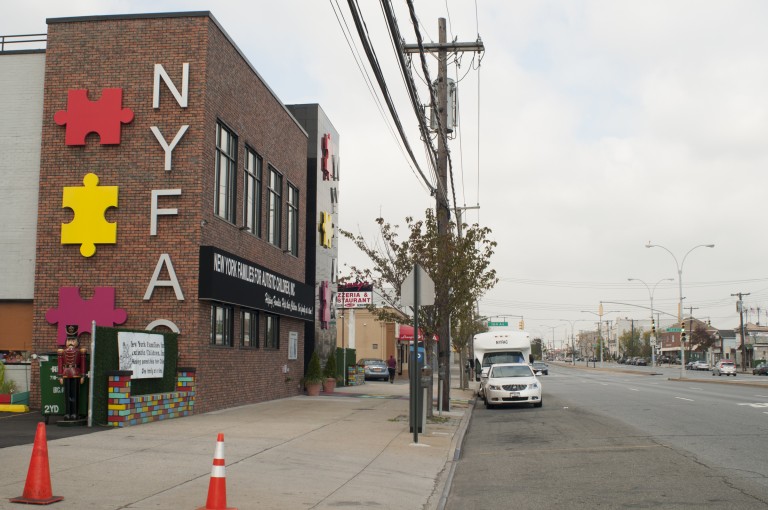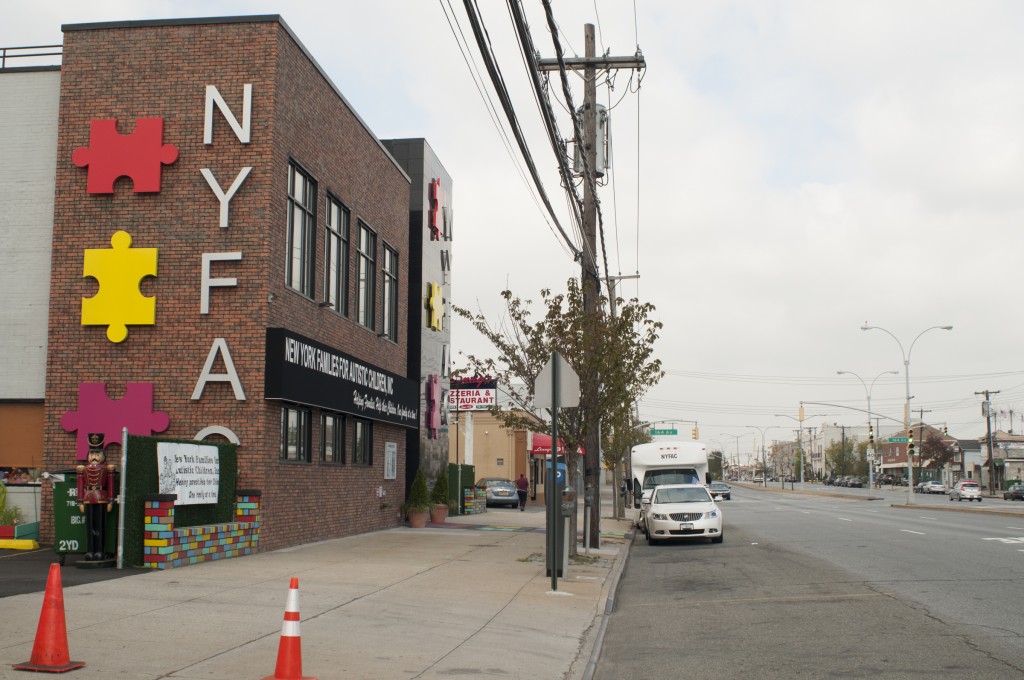Water can be seen rushing through the cracks between the doors, the floor slowly disappearing until the screen goes dark. The surveillance footage taken during Sandy at the New York Families with Autistic Children facility is dramatic, showing the state of the art center taking on four feet of water on the first floor, soaking toys, instruments, and supplies. The president of NYFAC, Andrew Baumann, never even got to open the doors of the brand-new facility to the public before he was rebuilding it.

NYFAC’s building was devastated by flooding from Sandy before the group even got a chance to open their brand new facility to the community.
“You try to plan and develop contingency plans, and what if, what if, what if,” Baumann said. “I don’t think that anybody could have what-iffed this one. Nobody took this storm for what it was. I can’t tell you that I planned for it.”
The storm set back the grand opening of the center by six months, during which time Baumann and his staff were far from idle.
“My service coordinators and my case managers, they worked overtime making sure that all our families were OK, and then the ones who really needed help we focused in on.”
NYFAC has a large home services division based out of their administration building, which is in a different part of Howard Beach and aside from losing power, was relatively unscathed by the storm. As soon as possible after the storm, the staff continued to do home visits to families, even if they were rebuilding, even if they were in shelters.
“Consistency is a very very big thing with kids with autism,” Baumann said.
“My staff was marvelous,” he continued, noting that most of his staff lived in the area and were personally affected by the storm, but still came to work and made sure that everyone else was taken care of.
Beyond the dedication of the staff, NYFAC was helped by their bank, which extended a large line of credit to start with repairs and by other members of the neighborhood.
“This community came together in a way that I have never seen before – everybody was there for everybody else,” Baumann said, recounting running into other business owners in the hardware store and the pizzerias and pharmacies on the boulevard giving away free food and supplies to those in need during the aftermath.
The recovery process is less visible on the streets one year after the storm, but the sense of community persists at NYFAC. Project Hope, one of the operations of FEMA, continues to meet regularly in one of NYFAC’s conference rooms and the center is open to politicians and other civic groups for use.
“We were so welcomed and embraced by this community, it would be just wrong to not be a community minded facility,” Baumann explained.
The building is entirely finished, and offers a little bit of everything with spaces for play, learning, cooking, sensory studies, music and medical care on the first floor and a full video studio on the second.
Not only is Baumann aiming to have NYFAC a one stop shop for all community needs, he is looking at ways to mitigate damage for the next storm. He sits on the New York Rising task force, which is looking at ways to prepare for the next storm. Among the suggestions are floodgates, building a flood-proof emergency warehouse stocked with supplies, emergency rations, and an emergency response team.
For NYFAC, Baumann is taking every precaution that he will not have to rebuild for a third time. “I have so much flood insurance now that if you spit, I could follow a claim” he laughs.
He has already installed backflow valves on the drains and a generator on the roof that hooks up to gas lines, and is looking into hurricane doors. Next time, everything would be moved to the second floor and the power would be shut off. Next time, there would be outreach and stockpiles of supplies before the storm. Next time, there will be a contingency plan.
One thing will not happen though.
“I will never relocate, this is it.” Baumann said, looking around at the toys and stacks of papers in his office, the letters from politicians and the notes from his staff. “Nothing will replace this.”
By Kate Bubacz



